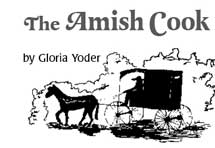
Spring for me conjures lots of memories of life on the farm. Dad spent hours outside after our dinner at 4:15 when he got home from work. He was a machinist at GE in Fort Wayne. We kids would be out there with him, except for Brenda. She was house-bound by choice, never one to elect to be outside working with machinery or animals—so she remained in the house with Mom.
Mom and Brenda cooked, baked, and cleaned while Dad and the rest of us completed outside chores and made equipment ready for spring planting. Sharon, Mary, and I spread hay for the cows in the feeding area of the barn, slopped the pigs in the hoghouse, filled water tanks and troughs, and fed the chickens and picked eggs. I’m sure I’ve forgotten something.
Bobby and Dad went to work removing last year’s dirt from discs and spikes and springs of harrows, as well as scraping chunks of earth from plowshares. They greased the moving parts using a trusty grease gun to shoot the lubricant into grease zerks. (Yes, “zerks”! A word not found in my online dictionary, but I know that’s what Dad called them. He would be surprised to know today you can order “zerks” on amazon.com and have them delivered in a day or two.)
Bobby and Dad also prepared the tractors for upcoming hours of field work: turning the dirt, leveling the ground, planting corn and soybeans. That meant cleaning spark plugs, checking fuel lines, inflating tires, and probably much more that I was not aware of. We had two Allis-Chalmers tractors (a very old one with front wheels wide apart and a newer model with narrow front wheels) and a John Deere Model A, a row-crop tractor with the narrow front wheels.
Our two-row corn planter (It takes a lot of passes to plant an entire field with a small planter like that.) had been readied for the next planting season after Dad was sure it wasn’t needed for replanting after last spring. Some years spring rains flooded parts of fields where seeds or young plants would be drowned. A second planting would occur if the field dried and was re-prepped in a timely manner. Prayers for a long growing season were called for at such times.
The larger 8-foot red grain drill, which had been used for planting winter wheat, would need a little preparation for sowing soybeans. Mud would need to be scraped off the discs that cut the furrow into which soybean seeds would fall. Not a fun job. Shooting air into the grain boxes and through the channels where seeds fell was necessary to prevent clogging. I considered myself lucky if I were assigned air compressor duty to blow away the dust and chaff from the previous season. Some jobs on the farm were actually fun.
Once fields were plowed, it was time to pick up rocks that magically rose to surface every single year. I never understood that. Still don’t. (Where on earth, under earth, did they come from?) Usually, we just lugged the rocks (the ones we could lift) to the end of the field closest to the unearthing. I did not consider that one of the fun jobs.
The day came when Dad gave Mom instructions for ordering seed corn and soybean seed and fertilizer. I knew there was math involved in that ordering, and I wanted no part of that. Too much multiplication and division to my liking. Acreage size of the fields, pounds of seed and fertilizer needed per acre, weight of bags of seed and fertilizer, number of bags needed for each field. Mom placed the order with the grain mill in Ossian next to the Ossian pool; both are long gone. She took our big red International Harvester truck to the mill and picked up the order, drove home, and backed the truck into the barn or church to be unloaded.
I did say “church.” We purchased the long-abandoned church and moved it from an old cemetery on 200W behind our property to our barnyard on 1000N. But that’s another story.
All this didn’t happen overnight. It took weeks of teamwork and preparation. We kids could help only so late because there was homework to do, unless it was spring break. We never went anywhere for that week. In fact, we rarely took a family vacation. When we did, it was after crops were planted. And then it was a short one, maybe a 3- or 4-day vacation to somewhere in Michigan. We left livestock and the cats and dog in someone’s care. Dad didn’t like being away and depending on someone else for extended periods of time. But we did get those occasional getaways.
Here’s the Thing: Many things, including seasons, conjure memories. I could write a similar column about summer on the farm with its winter wheat harvesting, corn cultivating, weed pulling, and straw and hay baling. Summer and fall were times when calves, piglets, and lambs were born while farming was on going.
I wonder what memories seasons trigger for you. What are your childhood recollections of winter, spring, summer, and fall? Is one season a greater memory jogger than the others?
Let’s talk.
annaspalding1956@gmail.com
———
Editor’s Note: This is one of a series of articles written by a group of retired and current teachers — LaNae Abnet, Ken Ballinger, Billy Kreigh, Kathy Schwartz, and Anna Spalding. Their intent is to spur discussions at the dinner table and elsewhere. You may also voice your thoughts and reactions via The News-Banner’s letters to editor.



